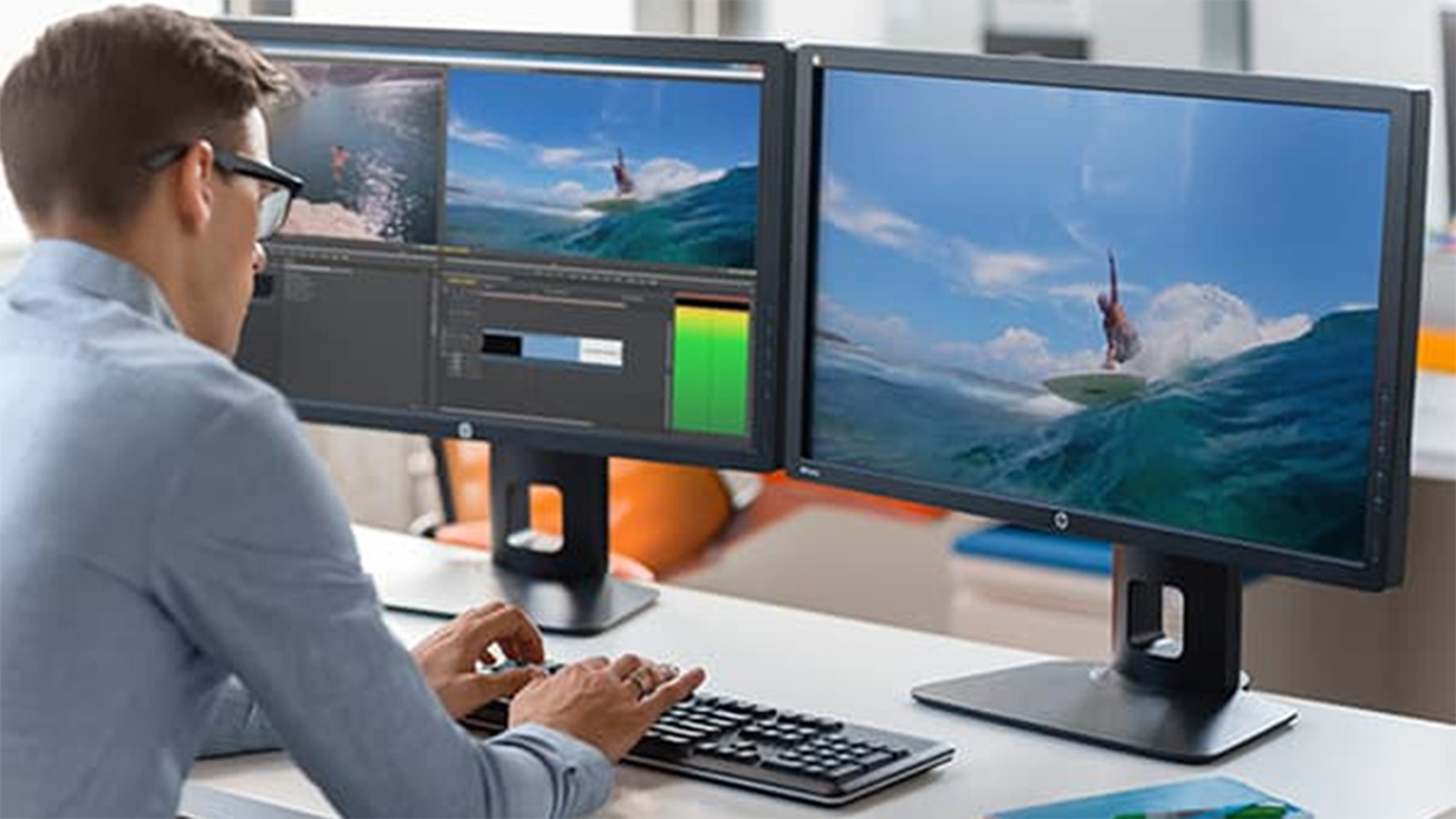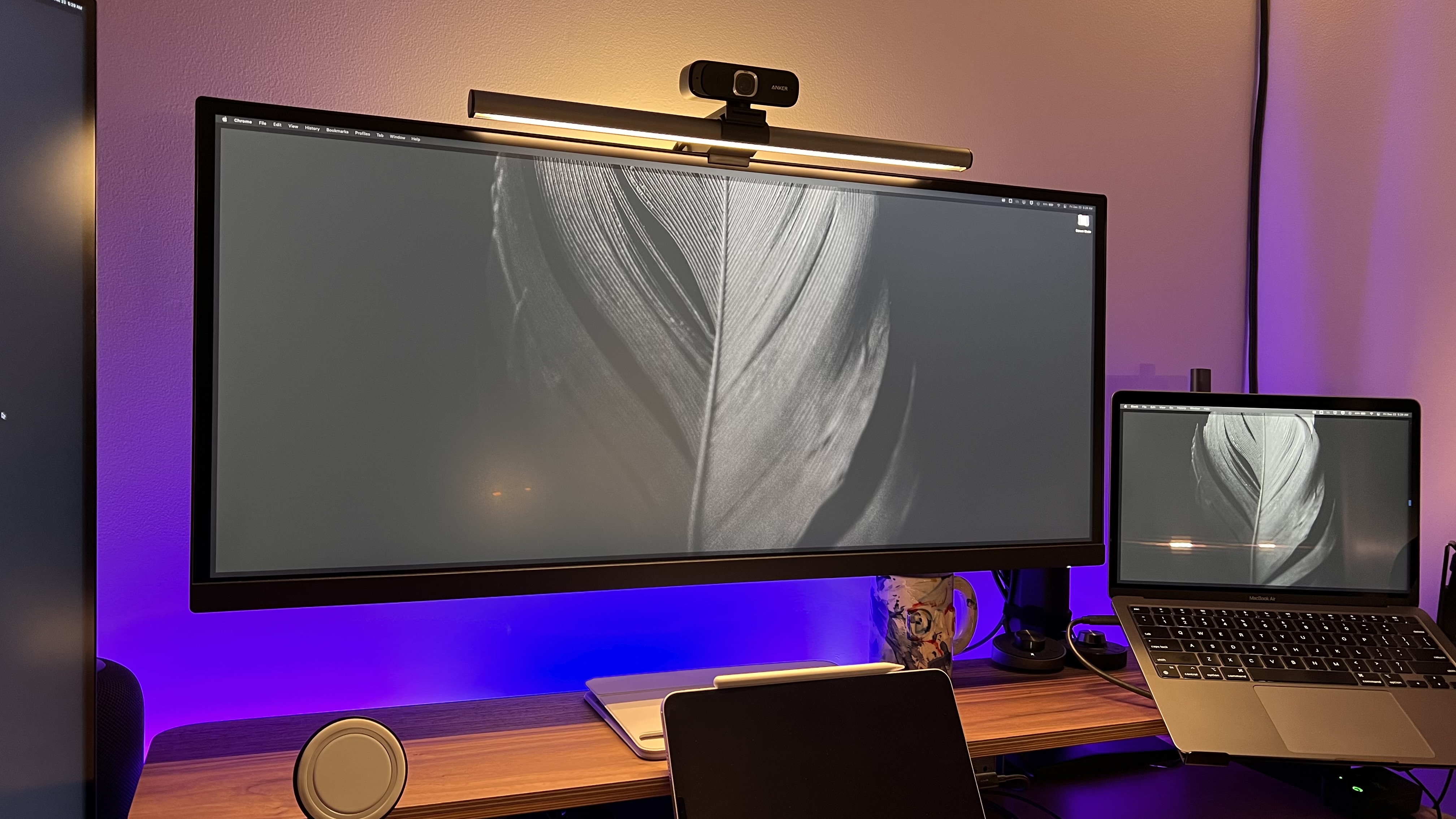Ultrawide vs dual monitor: which is the best way to get more screen real estate?
We break down the ultrawide vs dual monitors debate

The standardization of multi-output graphics cards has pushed a nice amount of PC owners into utilizing various display types. This includes the rise of ultrawide and dual monitor set-ups that lean toward different usage varieties. Be mindful that both display styles are going to be expensive in addition to requiring extra space.
Regardless, the best ultrawide monitors are going to be useful for task including video editing and high-end PC gaming. On the other hand, dual monitors are best for multi-taskers who need to work with constant information separate "desktops" like share prices or video conferencing while working on a report. It’s also best to understand that both set-ups have different instillation requirements.
Potential buyers looking into which monitor option works best for them should read our breakdown below.
Ultrawide vs dual monitor: Price

Both monitor options are widely available at most major online and brick-and-mortar retailers. The best thing about choosing between the two is that there are a slew of price options for budget level alongside higher price points.
When it comes to ultrawide monitors, on the lower level is the AOC CU34G2X which packs in many quality features for around $500. Meanwhile, the more premium priced Samsung Odyssey Neo G9 offers a lot for its $1,499 pricepoint. Somewhere in the middle balancing feature set and price is the $798 BenQ EW3880R.
There are different approaches one can take toward going for a dual monitor set up. Users can try buying two of the same display types or make priorities between the main and secondary display. Users going for the same monitor for general task can simply buy the best monitor for their needs twice.
PC Gamers who have to multitask can purchase one of the best gaming monitors and a cheaper one for work related tasks as well. Video editors who need a few displays while using Premier Pro may want to get two of the best monitors for video editing if an ultrawide is too much.
Sign up for breaking news, reviews, opinion, top tech deals, and more.
Ultrawide vs dual monitor: Design

Ultrawide monitors are designed to take up a lot of room considering how wide the display is. This means that an individuals desk or table will need some serious space unless one plans on mounting it to a wall. During set-up, many can be a bit unwieldy in weight, especially when trying to connect a base stand. However, ultrawide users only need one source of power and one Display Port output. Some ultrawides may require two HDMI ports if connecting through that output as well. Also understand that that some ultrawide displays aren’t very poseable compared to smaller monitors.
Users leaning into dual monitors are going to need at least two power sources and two separate outputs. There’s also more freedom in how one wants to set them up as they don’t necessarily have to be side-by-side. Some dual monitor users may have them as far apart as their input and power cables will allow. If users are simply attempting to mirror the same image from a desktop, there are different splitters for HDMI or Display port outputs available. Dual monitors allow for a bit more freedom if users have different output devices outside of a PC such as a gaming console or streaming device.
Ultrawide vs dual monitors: Performance

If you have best gaming PC around, an ultrawide monitor is going to be a fantastic way to game. It’s simply the most optimal experience in PC gaming, providing immersive graphics for fisually stunning games like Red Dead Redemption 2, God of War, Marvel’s Spiderman, Cyberpunk 2077, Abzu and Forza Horizon 5.
For PC gamers looking for high-end performance, there are ultrawide monitors that reach as high as 240Hz when it comes to refresh rates as well, so you can have it all. Outside of gaming, having that much screen real-estate works with multitasking even if dragging a mouse from one side to the other can seriously take some time to get use to. Be mindful that certain games and software doesn’t offer ultrawide support for full screen mode, so your experience might not be as optimal as one would hope.
Depending on how one plans on using a dual monitors set up, there’s a lot of flexibility. Though certain games and certain software offer support for two monitors, having them side-by-side seems a bit odd due to the bezzle split. Built in Windows features like Snap were created for easy resizing and moving windows around. Beyond that, non-ultrawide monitors at the higher end have higher pixel density and usually look better when it comes to overall image quality. Creative task like video editing is a bit better on dual monitors because of this.
Which one should you buy?

High-end PC gamers may have a better appreciation for ultrawide monitors due to the amount of content that can be rendered on screen at one time, and playing certain competitive games like Call of Duty: Warzone can even lend a tactical advantage by having a larger field-of-view.
Meanwhile, multitasking desktop users who want to have several browser and app windows on separate screens may want to try dual monitors. The better poseability of most standard monitors adds to the versatility as well. Ultrawide and dual monitors aren’t better than the other. It’s simply about personal preference of how one wants their desktop experience.

Ural Garrett is an Inglewood, CA-based journalist and content curator. His byline has been featured in outlets including CNN, MTVNews, Complex, TechRadar, BET, The Hollywood Reporter and more.